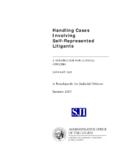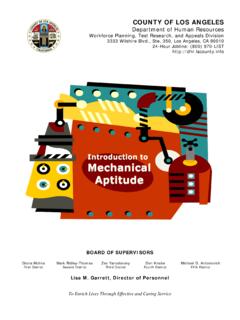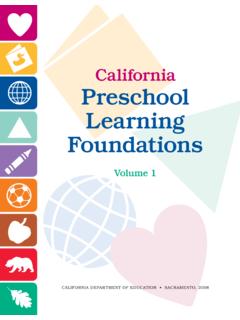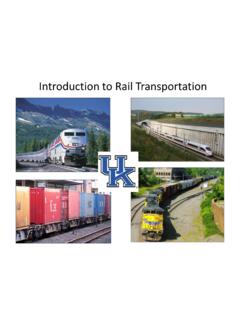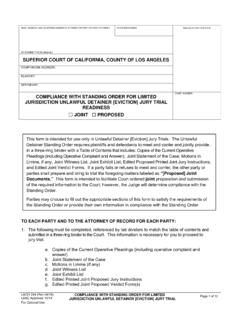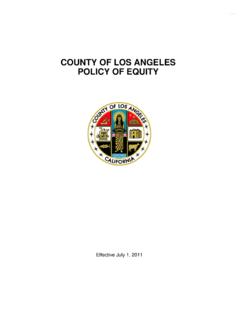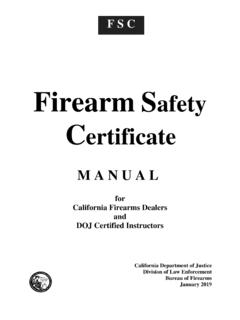Transcription of Preparing All Teachers to Meet the Needs of English …
1 Preparing All Teachers to Meet the Needs of English Language LearnersApplying Research to Policy and Practice for Teacher EffectivenessJennifer F. Samson and Brian A. Collins April 2012 associated press/Nati harNikPreparing All Teachers to Meet the Needs of English Language LearnersApplying Research to Policy and Practice for Teacher EffectivenessJennifer F. Samson and Brian A. Collins April 2012 1 introduction and summary 4 Growing numbers of ELL students in the United States 8 Insufficient and inconsistent information for Teachers 12 Ensuring all Teachers are adequately prepared to work with ELLs 20 Recommendations 23 About the authors 24 EndnotesContents1 center for american progress | Preparing all Teachers to Meet the Needs of English Language LearnersIntroduction and summaryThere is a sea change occurring in education across the country in the systematic way that we consider what students should be learning and how Teachers should be evaluated.
2 Recently, nearly all states have adopted and have begun to roll out the Common Core Standards as the benchmark for what students nationwide should know and be able to do at each grade level, K-12. Additionally, in an effort to become eligible for federal funds under Race to the Top, many states have altered their educational policies to match the priorities of the Department of Education, which include high-stakes evaluation of Teachers . Amidst these sweep-ing changes in the enterprise of teaching and learning, English language learners, or ELLs, are one subgroup of students that require special attention, particularly because of their growing numbers and low-performance relative to their non-ELL peers.
3 For schools, improving academic outcomes for ELLs is a litmus test for whether Teachers are meeting their charge to truly leave no child behind. It is precisely in these times of change that opportunities arise for implementing pur-poseful teacher effectiveness initiatives that have promise for improving outcomes among the nation s least well-served students. The recent increase in immigration accounts for rapid and substantial demo-graphic changes in the United States s school-aged population. An estimated 25 percent one-in-four children in America are from immigrant families and live in households where a language other than English is This has significant implications for schools and the current discourse about the role of teacher qual-ity and effectiveness in improving educational outcomes.
4 What is rarely discussed in these debates, however, is what teacher quality means for different types of students. The fact that the nation s Teachers are and will increasingly encounter a diverse range of learners requires that every teacher has sufficient breadth and depth of knowledge and range of skills to be able to meet the unique Needs of all students, including those who struggle with English . While it is true that there are educational specialists for example, English as a second language and bilingual Teachers , who have expertise in supporting ELLs, many Teachers do not. Yet the reality is that most, if not all Teachers have or can expect to have ELL students in 2 center for american progress | Preparing all Teachers to Meet the Needs of English Language Learnerstheir classroom and therefore must be prepared to best support these children.
5 In many cases, a general education teacher who knows the content and pedagogy to teach to the grade level standards will also need specific knowledge and skills to help ELLs access the curricula. While there are still many aspects of educating ELLs that remain contested ser-vice delivery models, native language versus English -only instruction several comprehensive sources from the research community have begun to identify critical knowledge and skills for Teachers of ELLs. Recently, university research-ers Kip Tellez and Hersh Waxman2 conducted a thorough review of the research that highlights important considerations for English as a second language, or ESL, and bilingual education Teachers .
6 Their review indicates that pre-service teacher education, recruitment and selection, in-service training, and teacher retention are potential policy areas to make headway in improving teacher effectiveness. While it is important to articulate standards, knowledge, and skills for ELL and bilingual education Teachers , it is equally critical to consider how best to prepare mainstream, or general education, Teachers to work with English language learners since they are increasingly likely to have such students in their class. To date, there has been relatively little attention paid to the essential standards, knowledge, and skills that general education Teachers ought to possess in order to provide effective instruction to ELLs placed in their from the literature on what English as a second language and bilingual Teachers should know, we extrapolated foundational knowledge about ELLs that might serve general education Teachers that have these students in their classrooms.
7 These include the importance of attending to oral language devel-opment, supporting academic language, and encouraging Teachers cultural sensitivity to the backgrounds of their students. We argue that these areas of knowledge be purposefully and explicitly integrated into the preparation, certi-fication, evaluation, and development of all Teachers in the interest of improving outcomes for English language learners. In this report we summarize key findings drawn from the literature on promising practices that all Teachers can employ when working with ELLs. We also consider the degree to which that research is integrated into the preparation, certification, and evaluation of Teachers as a means for improving educational outcomes for ELLs.
8 Through a review of professional and state level standards for teacher-edu-cation programs, state teacher-certification examinations, and teacher-observation evaluation rubrics, we examine gaps in policy and practice pertaining to general To date, there has been relatively little attention paid to the essential standards, knowledge, and skills that general education Teachers ought to possess in order to provide effective instruction to ELLs placed in their center for american progress | Preparing all Teachers to Meet the Needs of English Language Learnerseducation Teachers of ELLs. We argue that system-level changes must be made to establish evidence-based practices among general education Teachers of ELLs.
9 By comparing and contrasting five key states California, Florida, Massachusetts, New York, and Texas that have large numbers of English language learners, we consider the way in which the specific Needs of ELLs are taken into account in educational policies and school-level practices. Our specific aim is to identify essential knowledge and skills that can be purposefully integrated into teacher-development programs and initiatives. In order to improve teacher effectiveness with ELL students we recommend that consistent and specific guidelines on the oral language, academic language, and cultural Needs of ELLs be addressed in.
10 Reauthorization of the Elementary and Secondary Education Act or ESEA Revisions to National Council for Accreditation of Teacher Education or NCATE Standards State regulations Teacher-preparation programs State certification exams Teacher-observation rubrics in performance evaluations Professional development linked to teacher evaluations4 center for american progress | Preparing all Teachers to Meet the Needs of English Language LearnersGrowing numbers of ELL students in the United States Currently, more than one out of four of all children in the United States are from immigrant families, and in most cases these children speak a language other than English at In the decade between the 1997-98 and 2008-09 school years, the number of English language learners in public schools increased by 51 percent while the general population of students grew by just 7 Given the increase in number of ELL students in the United States, many teach-ers should expect to have ELLs in their classrooms.











